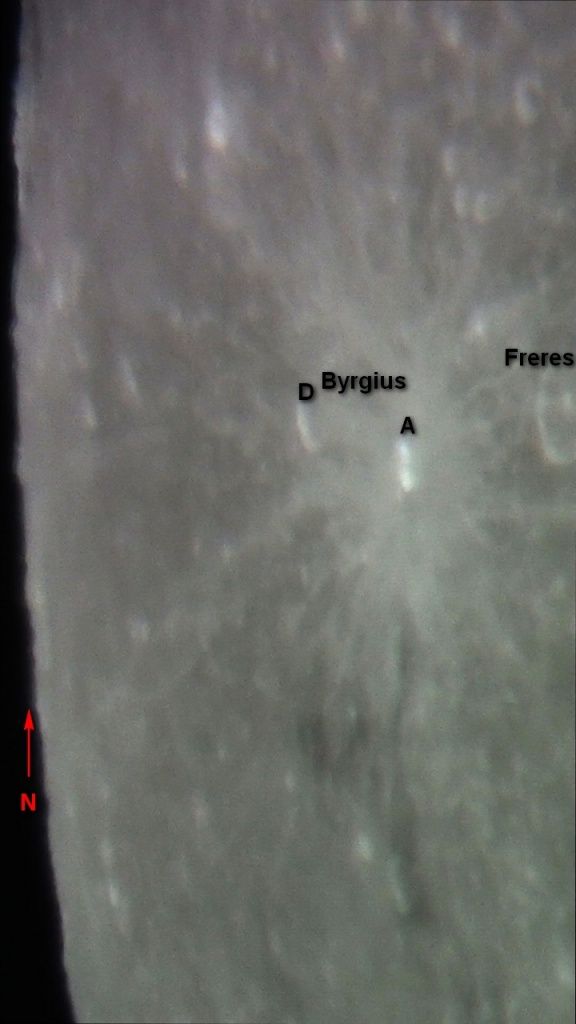Sunday, 15 April 2012
Byrgius crater on the Moon
Young craters on the Moon as Byrgius (87 km), and larger old craters, have large deposits of lava material within and around them. Initially thought to be of volcanic origin, but these deposits are now known to be from the high pressure shock and melting of materials on the impact area. Melted deposits from impacts are recognized as streams and ponds.
Byrgius, is located on the western edge of the Moon. As a mark, looking at the whole Moon, I think is right between the two craters Grimaldi on north, and Schickard on south.
Byrgius's edge is eroded, with Byrgius A (19 km) on the east and Byrgius D (27 km), located in north-western edge. The floor is relatively flat and non-distinctive because of small craters on it. Byrgius A has a ray system, which extends over 400 kilometers. This feature makes Byrgius A more interesting than Byrgius.
Crater name comes from Jost Burgi, or Joost, or Jobst Burgi (February 28, 1552, Lichtensteig, Switzerland - January 31, 1632), who produced and astronomical instruments.
Photographer: Victor Lupu
Optics: Celestron C8-Newtonian telescope, plossl 20mm, 2x Barlow
Mount: CG5 (EQ5)
Device: Sony CX105
Filter: no
Date: 08/16/2011
Location: Baia Mare, Romania
Processing: video capture, FastStone Image Viewer
IMAGES AND VIDEOS
About me
(8)
Astronomical Phylosophy
(5)
Astronomy Labels
(1)
Astronomy terms
(5)
Craters-Reinhold and Lansberg
(2)
Craters-Santbech
(5)
DSLR Hyperion pictures
(4)
DSLR astronomy pictures
(4)
DSLR telescope pictures
(21)
Occultations
(5)
Rima Ariadaeus
(4)
Rupes Altai
(10)
The colours of the Moon
(7)
Things about the Moon
(9)
Weird sightings
(8)




 Sunday, April 15, 2012
Sunday, April 15, 2012
 Unknown
Unknown






 Posted in:
Posted in: 


0 comments:
Post a Comment